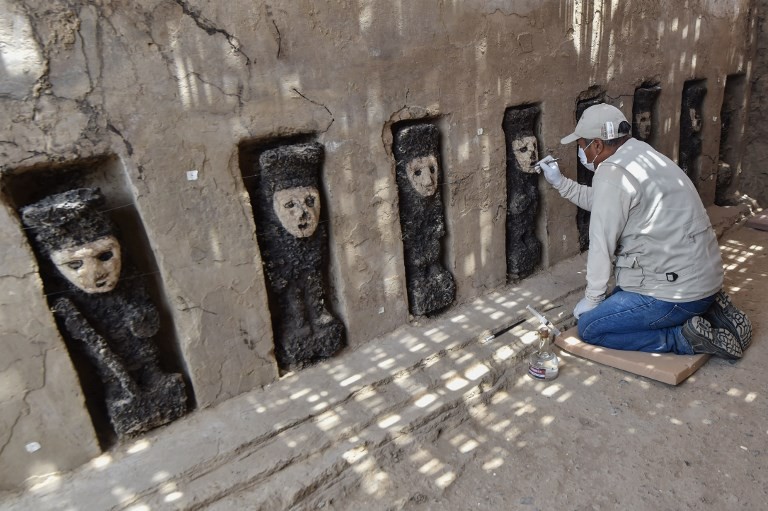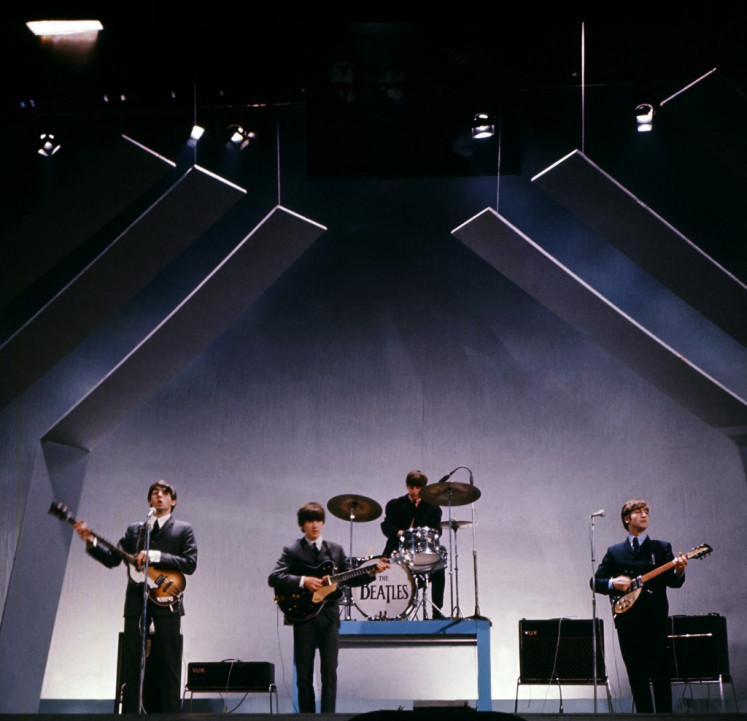Peruvian archeologists discover pre-Columbian statues
Archeologists in Peru have found 20 800-year-old wooden statues in the largest pre-Columbian site in the Americas.
Change Size
 An expert works to uncover one of the 20 wooden sculptures which were recently discovered at the ancient archaeological site of Chan Chan, in the outskirts of the northern city of Trujillo, in Peru, on October 22, 2018. (AFP/Cris Bouroncle)
An expert works to uncover one of the 20 wooden sculptures which were recently discovered at the ancient archaeological site of Chan Chan, in the outskirts of the northern city of Trujillo, in Peru, on October 22, 2018. (AFP/Cris Bouroncle)
A
rcheologists in Peru have found 20 800-year-old wooden statues in the largest pre-Columbian site in the Americas, Culture Minister Patricia Balbuena and researchers revealed on Monday.
The statues, all but one of which were in a good condition, were found in the Chan Chan archeological site: a city that was once the capital of the Chimu Kingdom and pre-dated the Inca Empire.
Located close to the north Peruvian modern city of Trujillo, Can Chan was comprised of 10 citadels, or walled palaces, in its six kilometer squared (2.3 square miles) center of a wider city that measured 20 square kilometers.
Each statue measures 70-centimeters (27.5 inches) in height and they were aligned in niches in the wall of a ceremonial corridor decorated with high mud reliefs in a thousand-year-old building.
The corridor where they were found, buried in earth, was only discovered in June in the Utzh An or Great Chimu palace.
"It's an important discovery for its age and the quality of its decoration," said Balbuena while visiting the site.
Read also: Germany returns priceless gold mask to Peru
The statues, discovered in September, are black with beige clay masks and "would be the oldest sculptures known to date in Chan Chan," said archeologist Arturo Paredes, who is leading the dig.
Each sculpture is standing with a circular object on its back, perhaps a shield.
The corridor is decorated with squares, like a chessboard, and waves in high relief, while there are also images of the "lunar animal," a mythical symbol common in pre-Hispanic cultures along the north Peruvian coast, according to archeologist Henry Gayoso.
The Chimu culture flourished between 900 and 1450 AD on the northern coast of Peru and at its apogee, Chan Chan, which means resplendent sun, had 30,000 inhabitants.
Only 14 square kilometers of the original complex remains but even that is under threat from the climate, looting and residential encroachment.
It attracts thousands of tourists from all over the world every year.
Some 500 people, including 50 archeologists are working on investigative and preservation projects in Chan Chan, which was declared a UNESCO World Heritage site in 1986.









